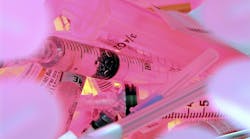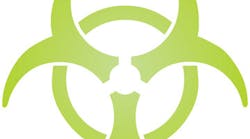Advancing sustainable management of dental sharps waste: Strategies, challenges, and innovations
Comprehensive overview of dental sharps waste
In dental practices across the globe, managing sharp waste is not just a matter of regulatory compliance but a significant concern for public health and environmental safety. If not properly handled, items such as needles, syringes, and scalpel blades can cause injuries or infections. Moreover, improper disposal of these items can lead to environmental contamination, affecting the immediate vicinity and the broader ecosystem.
Dental sharps waste comprises all items in a dental setting that could cut or puncture the skin, including detritus such as broken glass or plastic, which can become hazardous when contaminated with infectious agents. The primary risk associated with mishandling dental sharps is the transmission of bloodborne pathogens, which poses serious health risks to dental staff and waste handlers alike.
Each piece of sharp waste carries the potential not just for physical injury but also for infection, which underscores the need for meticulous handling. The goal of sharps management is to minimize these risks through effective strategies throughout the waste's lifecycle, from use to disposal.
Lifecycle of dental sharps waste
The lifecycle of dental sharps includes several key stages:
-
Creation: Generated during routine and specialized dental procedures.
-
Handling and Immediate Management: Practitioners use tools to avoid direct contact and place sharps directly into designated containers.
-
Storage and Containment: Containers should be puncture-resistant, leak-proof, and labeled according to health regulations. They must be stored securely to prevent unauthorized access and reduce the risk of accidental exposure.
-
Transport and Disposal: Handled by certified medical waste handlers to ensure that the sharps are transported safely to treatment facilities where they are typically autoclaved or incinerated.
Understanding this lifecycle is critical as it helps pinpoint where interventions can be made to improve safety and efficiency, thereby reducing potential hazards associated with handling and disposal.
Regulatory compliance and industry standards
Both within and outside the US, the disposal of dental sharps waste is tightly regulated by various health and safety agencies, including OSHA. These regulations are designed to protect health care workers and the public from the risks associated with sharps waste; non-compliance with these rules can result in significant penalties.
Key regulatory requirements include:
-
Proper classification and segregation of waste at the point of generation.
-
Use of approved containment systems that prevent needle-stick injuries and leaks.
-
Regular training for all staff on the latest protocols and safety measures.
-
Documented waste handling and disposal procedures to ensure traceability and accountability.
- Beyond compliance, there are industry standards and best practices designed to enhance the safety and efficiency of sharps waste management. Consider implementing a 'no-touch' disposal system (where already-used sharps are never handled directly), using self-sealing lids and tamper-proof containers, and doing regular audits and reviews of waste management protocols to identify areas for improvement and enforce regulations.
Understanding and integrating these regulatory and best-practice elements are crucial for any dental practice aiming to manage its sharps waste responsibly and sustainably. By aligning operations with these guidelines, dental professionals not only safeguard their health and that of their staff but also contribute to broader environmental conservation efforts.
Innovative waste management technologies
The field of waste management has undergone significant technological advancements that can revolutionize how dental practices handle sharp waste. These technologies aim to enhance safety and efficiency and contribute to environmental sustainability by reducing the impact of waste disposal. By adopting these innovations, dental offices can stay ahead in compliance, ensure safety, and demonstrate their commitment to environmental stewardship. Below are some key innovations to be aware of.
-
Autoclaves for on-site sterilization: Modern autoclaves are more efficient and have smaller footprints than older models. They sterilize used sharps on-site, reducing the risk of contamination during transport and decreasing the volume of waste that needs specialized disposal. This on-site processing encourages sustainability by minimizing the carbon footprint associated with transporting infectious waste.
-
Mail-back disposal programs: These programs are increasingly popular for smaller dental practices that may not generate enough waste to justify on-site treatment facilities. Used sharps are safely sealed in pre-approved containers and sent back to a central processing facility, ensuring compliance with disposal regulations and reducing the need for local storage.
-
Digital tracking systems: Leveraging technology to track waste can significantly enhance compliance and safety. These systems provide a digital trail for each item of waste from creation to disposal, making sure that all waste is accounted for and handled according to regulatory standards. This level of traceability is crucial for audits and maintaining high standards of practice hygiene.
-
Biodegradable sharps containers: Innovations in bio-based plastics have led to the development of sharps containers that can degrade more quickly and safely in landfill environments compared to traditional plastics. These containers provide an eco-friendly alternative by reducing long-term pollution, which impacts the overall environment.
Implementing new technologies
Integrating these technologies requires careful planning and consideration. It’s important to assess the specific needs of your dental practice, considering factors like the volume of sharps waste generated and the available space for equipment. You should also evaluate costs and benefits — not just in terms of immediate financial outlays but also long-term savings in waste management costs. Additionally, staff should be thoroughly trained on any new systems/procedures to uphold safety and compliance standards and office technology should always be up to date. This way, your practice remains at the forefront of efficient waste management standards.
Leading the charge in sustainable dental waste management
As we've explored throughout this article, the management of dental sharps waste is a critical aspect of running a modern dental practice that goes beyond mere compliance—it's about embracing responsibility for public health and environmental stewardship. Having a responsible practice not only mitigates the risks associated with sharps waste but also demonstrates a commitment to the broader goals of sustainability.
Dental professionals can lead by example, showing how health care sectors can effectively combine patient care with environmental consciousness. By integrating advanced sterilization technologies, participating in mail-back programs, utilizing digital tracking for waste management, and opting for biodegradable containers, practices can significantly reduce their environmental footprint.
Continuous education, investment in new technologies, and adherence to best practices are not just optional extras; they are essential components of a modern, responsible dental practice.
As we move forward, let us consider waste management not as a challenge but as an opportunity to redefine what it means to be health care leaders—providers who care as much for their environment as they do for their patients. By fostering a culture of sustainability, dental professionals can ensure that their practices not only comply with today's standards but are also prepared for tomorrow's expectations.
Vaibhav Garg is a content manager at BioMedical Waste Solutions (BMWS) with seven years of experience specializing in biomedical waste management.








